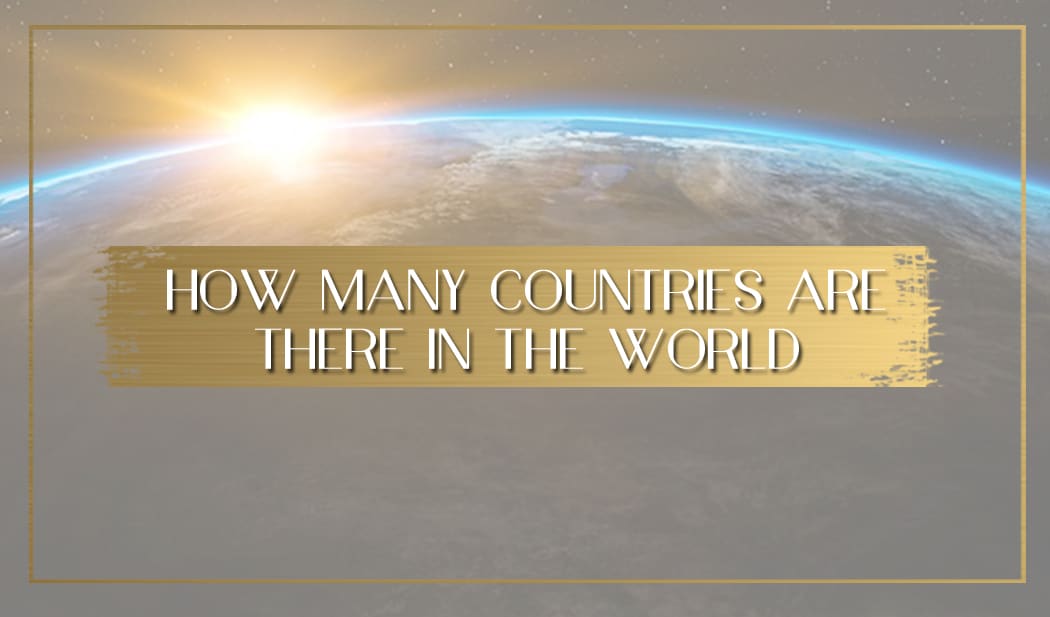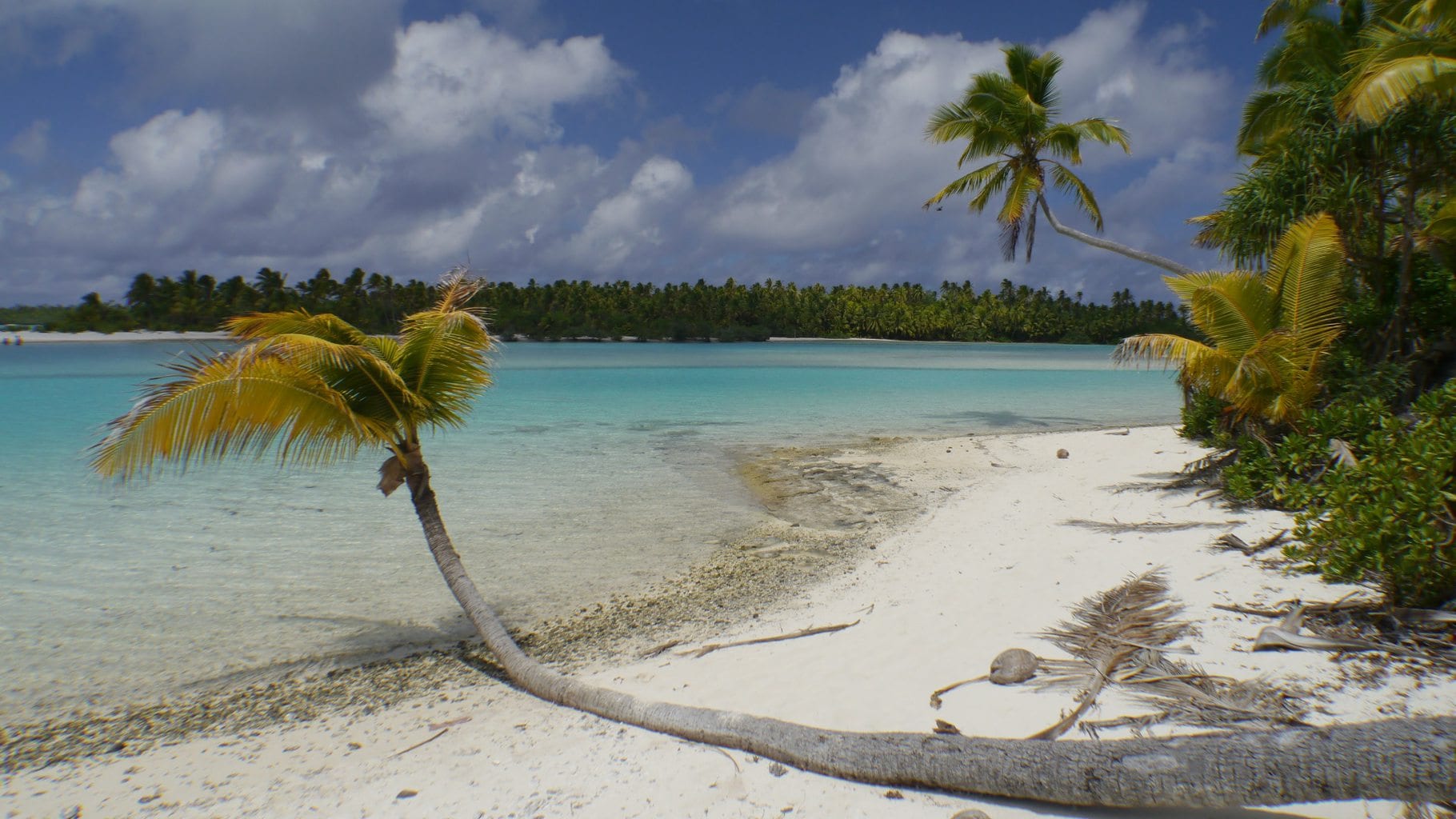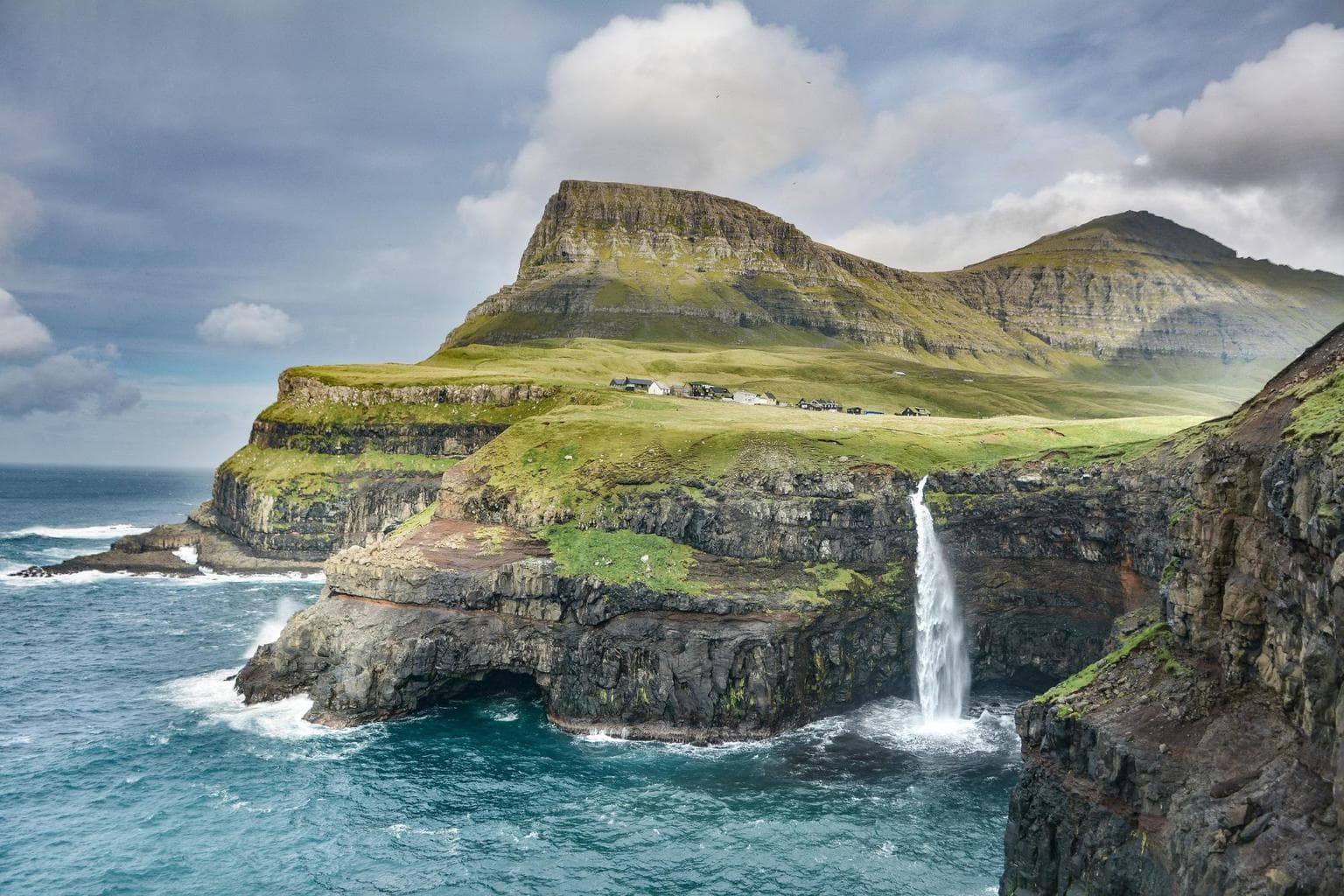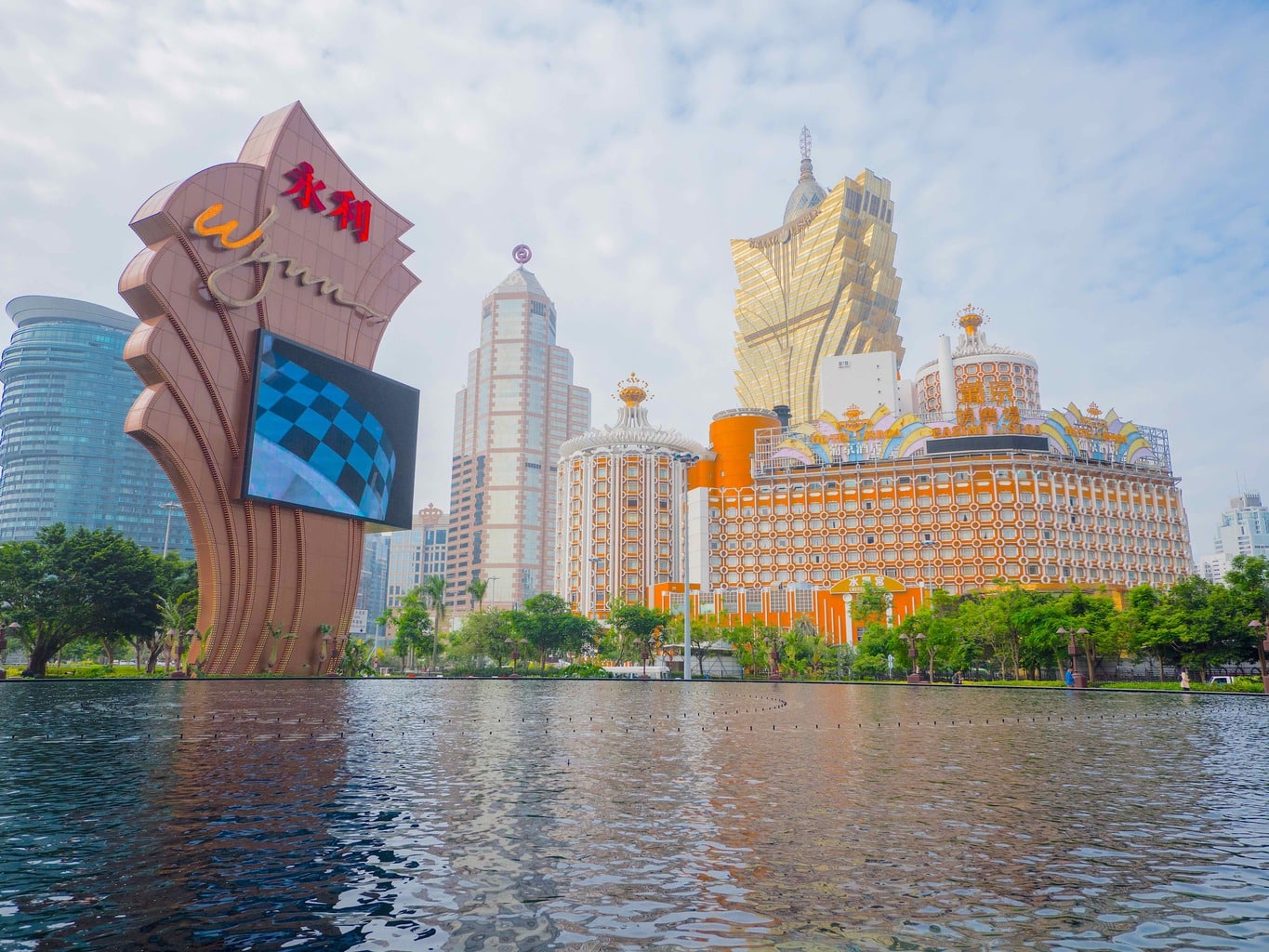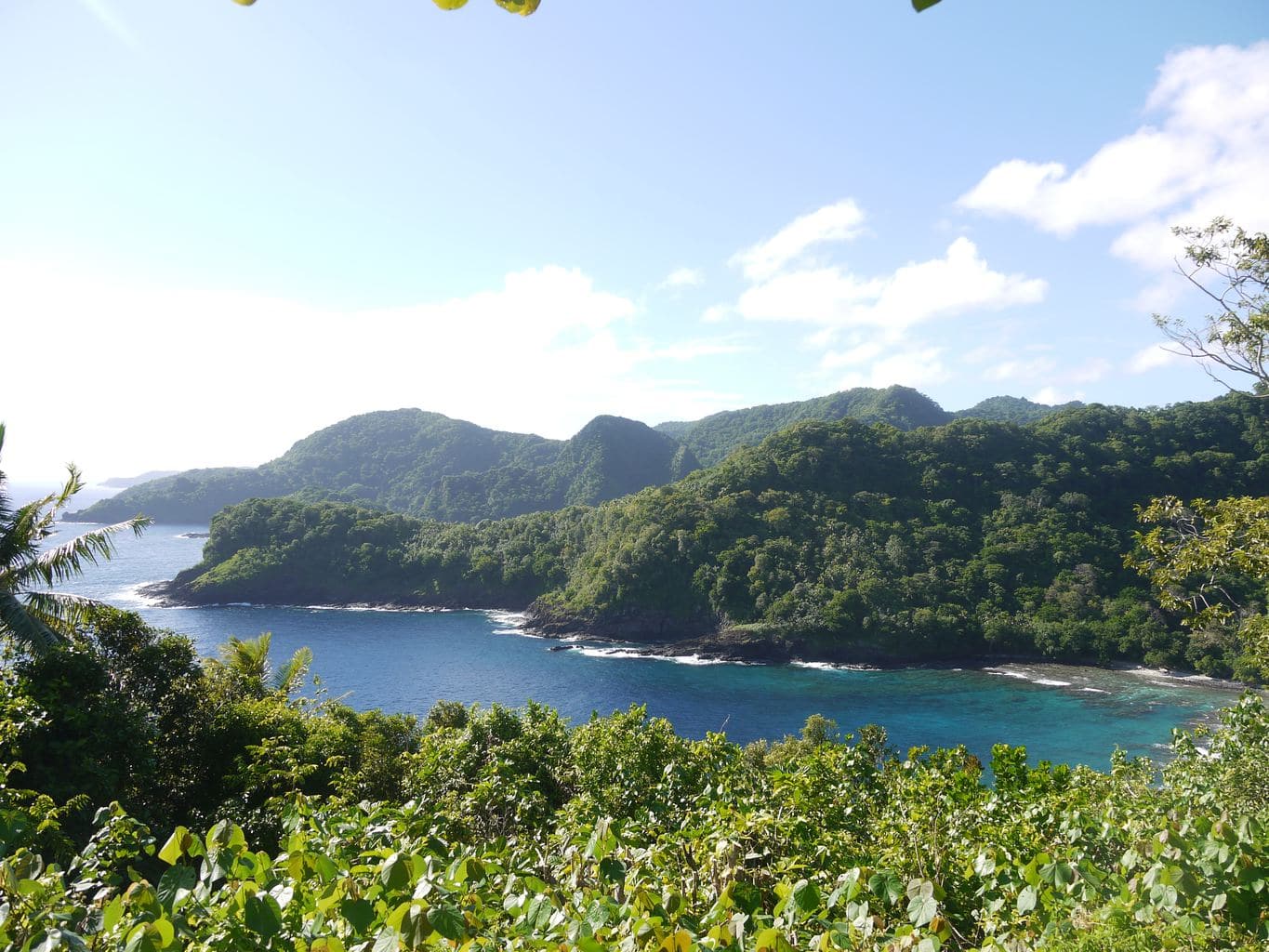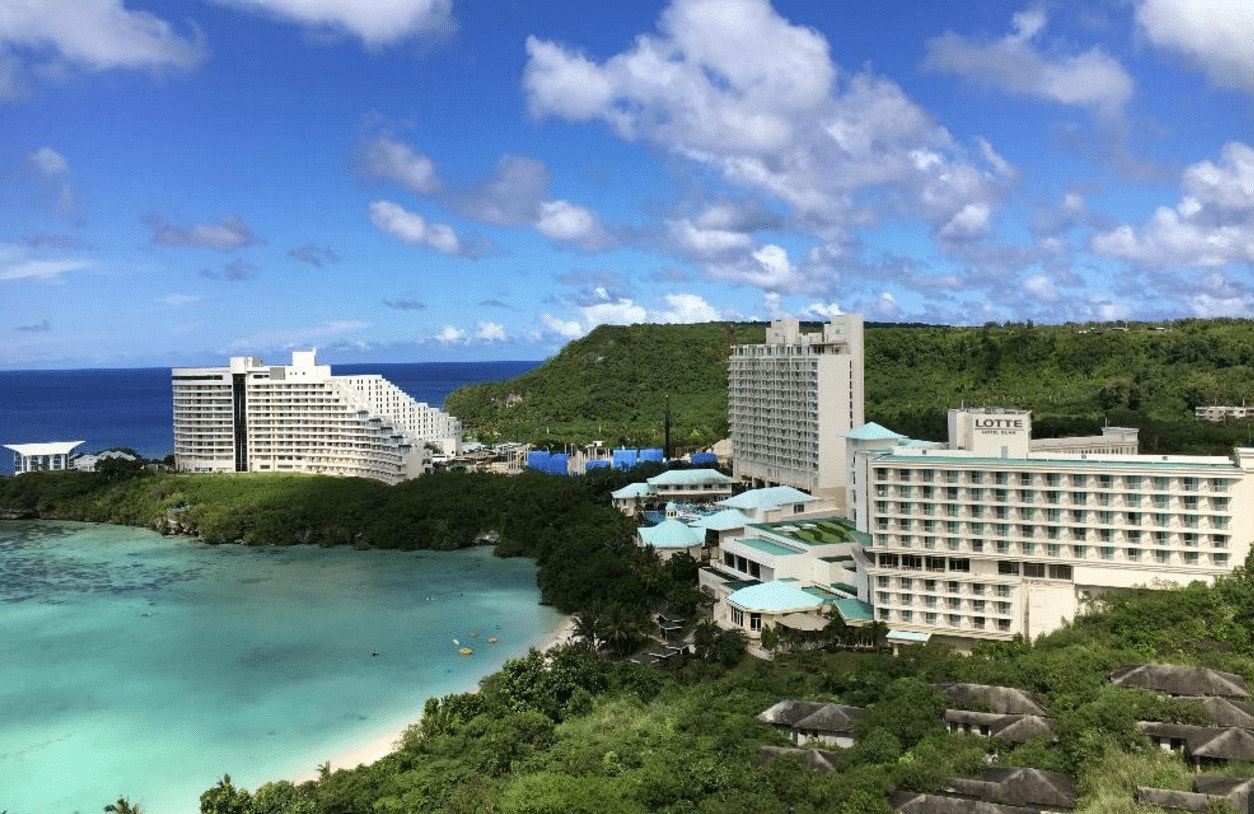This article on how many countries are there in the world was last updated in May 2022.
The answer to the question of how many countries there are in the world is not as simple and obvious as one would think because it depends on who you ask and how you look at it.
The UN recognises 193 countries and two non-member observer states making it a total of 195. So a lot of people will stop there, at 195.
But this figure does not include two nations that have been widely recognised as countries, although not fully endorsed by the UN because of special veto powers: Taiwan and Kosovo.
So, in my opinion, a more comprehensive count is 198: 193 UN members, 2 Non-member Observers, 2 partially recognised nations and Tibet.
However, this number is not as widely accepted as you would think and if you asked a Chinese or a Russian they would disagree as either recognise the last two as countries.
On the other hand, many people count other partially-recognised countries beyond Kosovo and Taiwan such as Northern Cyprus, bringing the number to 200.
But why is the question on how many countries there are in the world so complex?
Because there is no consensus around the sovereignty of some states and political interests always get in the way, and change constantly with the change in governments.
What is a country?
Before we can discuss how many countries there are in the world, we should define what is understood as a country.
The definition of the word country is simple, but the agreement around what actually makes a part of the world a country in the political sense of the word, and another, with similar characteristics, a territory, is not straightforward.
In the dictionary, a country, often used as synonymous for state, is “a nation with its own government, occupying a particular territory”, and a nation is “a large body of people united by common descent, history, culture, or language, inhabiting a particular country or territory”.
Thus, a country is a group of people with shared heritage that occupy a specific territory. You need three components to define a country: people, territory and government.
While accurate, this definition leaves room for interpretation.
There are lots of people living in defined territories and with shared identity that are not recognised as countries. Many of these have been making claims to independence for decades, including my own nation of Catalunya, or the Western Sahara.
Looking at things that may differentiate a country from a territory, like passports and country stamps, armies or currencies is not helpful either because several territories have them yet are not countries.
Furthermore, there are also 35 territories on top of the 195 countries that have their own government structures, even if they depend on another country for sovereignty.
Several examples are further illustrated.
French Polynesia uses the French Pacific Franc as its currency and occupies a specific territory, yet it is part of France and officially the European Union. Guam is a US territory with a unique history and without voting rights.
I could go on.
To determine the number of countries in the world, we need to look at the issue of legitimacy and international recognition and accept that if there is consensus around whether a territory is a country or not, then it must be, while asserting our own judgement in cases where international interest interfere with what is fair.
Number of countries in the world
Sovereignty is a controversial topic affecting the lives of many and its importance goes beyond the national pride. Many decisions are made based on geographical boundaries, from budgeting and taxation to trade agreements or international aid.
The question of how many countries there are is particularly relevant for those seeking to beat world records by visiting “all the countries in the world”, as it determines the denominator in their quest.
Do they need to visit 193, 195 or 197 countries? Do they have to make it to Palestine or does Tel Aviv count?
In a nutshell, the number of countries depends on who you ask and you will have to determine whose opinion you respect most and create your own world view.
As mentioned above, I count 197 countries (UN countries plus Kosovo, Palestine, Taiwan and The Vatican), others stay at the 193 UN-recognised number of countries, some go as high as 267.
To help you decide on your list of countries, below is a table with various numbers of countries as per various lists, and in the next sections, I will look at each of them and give you arguments to decide if you count it or not.
| Type of country-counting list | Number of countries considered |
|---|---|
| UN Members | 193 countries |
| UN Members + Observer countries | 195 countries |
| UN Members + Observer countries + Partially recognised territories | 200 countries |
| Countries with Olympic teams | 206 countries and territories |
| UN Members + Observer countries + Partially recognised territories + self governing territories | 208 countries and territories |
| UN Members + Observer countries + Partially recognised territories + self governing territories + non-self-governing territories | 225 countries and territories |
| CIA World Factbook | 267 countries and territories |
| Travelers Century Club | 327 countries and territories |
UN-member countries: 193+2
The most popular list of countries I always start with is the one that is backed by the United Nations with its membership and we will use that as the basis.
However, it is important to note that, as stated in its charter, “the UN is not a government nor a state and it does not possess the authority to recognise either a State or a Government” or to reject a country’s sovereignty, the UN merely reflects the decisions of its members.
Because of its international weight, being recognised by the UN warrants a high degree of legitimacy to any country, so membership is key to a country’s claim to independence.
UN member states
To achieve membership, a decision needs to be made by the majority of the members of the UN General Assembly, after the 15-member Security Council has proposed it. The Council has 5 Permanent members with veto power.
The Permanent Members are the only countries with UN Security Council veto power. This includes France, China, Russia, UK and US, who can veto resolutions such as recognizing a country’s sovereignty.
As you could tell from my intro, some of the countries that are not part of the UN list but are widely considered independent nations, have been prevented from full membership by one of the UN Security Council Permanent members who made use of their veto power.
Russia and China are the most active in using their veto power and have for decades opposed membership to parts of the world under their influence such as Taiwan and Kosovo.
Interesting to note that China has used their veto power only 11 times, although most of these occasions were in the last 20 years, while Russia has used it over 130 times in the history of the UN since 1946 and is the most active. Both the UK and France have not used their veto power since 1989
But let’s take a look at the list of 193 UN sanctioned countries in the world and the date they were added to the list. The list below also constitutes the number of countries in the world for many who stick to this list only.
| UN members | |||
|---|---|---|---|
| Country name | Date of admission to the UN | Country name | Date of admission to the UN |
| Afghanistan | 19-11-46 | Liberia | 02-11-45 |
| Albania | 14-12-55 | Libya | 14-12-55 |
| Algeria | 08-10-62 | Liechtenstein | 18-09-90 |
| Andorra | 28-07-93 | Lithuania | 17-09-91 |
| Angola | 01-12-76 | Luxembourg | 24-10-45 |
| Antigua and Barbuda | 11-11-81 | Madagascar | 20-09-60 |
| Argentina | 24-10-45 | Malawi | 01-12-64 |
| Armenia | 02-03-92 | Malaysia | 17-09-57 |
| Australia | 01-11-45 | Maldives | 21-09-65 |
| Austria | 14-12-55 | Mali | 28-09-60 |
| Azerbaijan | 02-03-92 | Malta | 01-12-64 |
| Bahamas | 18-09-73 | Marshall Islands | 17-09-91 |
| Bahrain | 21-09-71 | Mauritania | 27-10-61 |
| Bangladesh | 17-09-74 | Mauritius | 24-04-68 |
| Barbados | 09-12-66 | Mexico | 07-11-45 |
| Belarus | 24-10-45 | Micronesia | 17-09-91 |
| Belgium | 27-12-45 | Monaco | 28-05-93 |
| Belize | 25-09-81 | Mongolia | 27-10-61 |
| Benin | 20-09-60 | Montenegro | 26-05-06 |
| Bhutan | 21-09-71 | Morocco | 12-11-56 |
| Bolivia | 14-11-45 | Mozambique | 16-09-75 |
| Bosnia and Herzegovina | 22-05-92 | Myanmar | 19-04-48 |
| Botswana | 17-10-66 | Namibia | 23-04-90 |
| Brazil | 24-10-45 | Nauru | 14-09-99 |
| Brunei Darussalam | 21-09-84 | Nepal | 14-12-55 |
| Bulgaria | 14-12-55 | Netherlands | 10-12-45 |
| Burkina Faso | 20-09-60 | New Zealand | 24-10-45 |
| Burundi | 18-09-62 | Nicaragua | 24-10-45 |
| Cabo Verde | 16-09-75 | Niger | 20-09-60 |
| Cambodia | 14-12-55 | Nigeria | 07-10-60 |
| Cameroon | 20-09-60 | North Macedonia | 08-04-93 |
| Canada | 09-11-45 | Norway | 27-11-45 |
| Central African Republic | 20-09-60 | Oman | 07-10-71 |
| Chad | 20-09-60 | Pakistan | 30-09-47 |
| Chile | 24-10-45 | Palau | 15-12-94 |
| China | 24-10-45 | Panama | 13-11-45 |
| Colombia | 05-11-45 | Papua New Guinea | 10-10-75 |
| Comoros | 12-11-75 | Paraguay | 24-10-45 |
| Congo | 20-09-60 | Peru | 31-10-45 |
| Costa Rica | 02-11-45 | Philippines | 24-10-45 |
| Côte d'Ivoire | 20-09-60 | Poland | 24-10-45 |
| Croatia | 22-05-92 | Portugal | 14-12-55 |
| Cuba | 24-10-45 | Qatar | 21-09-71 |
| Cyprus | 20-09-60 | Republic of Korea | 17-09-91 |
| Czech Republic | 19-01-93 | Republic of Moldova | 02-03-92 |
| Democratic People's Republic of Korea | 17-09-91 | Romania | 14-12-55 |
| Democratic Republic of the Congo | 20-09-60 | Russian Federation | 24-10-45 |
| Denmark | 24-10-45 | Rwanda | 18-09-62 |
| Djibouti | 20-09-77 | Saint Kitts and Nevis | 23-09-83 |
| Dominica | 18-12-78 | Saint Lucia | 18-09-79 |
| Dominican Republic | 24-10-45 | Saint Vincent and the Grenadines | 16-09-80 |
| Ecuador | 21-12-45 | Samoa | 15-12-76 |
| Egypt | 24-10-45 | San Marino | 02-03-92 |
| El Salvador | 24-10-45 | Sao Tome and Principe | 16-09-75 |
| Equatorial Guinea | 12-11-68 | Saudi Arabia | 24-10-45 |
| Eritrea | 28-05-93 | Senegal | 28-09-60 |
| Estonia | 17-09-91 | Serbia | 01-11-00 |
| Eswatini | 24-09-68 | Seychelles | 21-09-76 |
| Ethiopia | 13-11-45 | Sierra Leone | 27-09-61 |
| Fiji | 13-10-70 | Singapore | 21-09-65 |
| Finland | 14-12-55 | Slovakia | 19-01-93 |
| France | 24-10-45 | Slovenia | 22-05-92 |
| Gabon | 20-09-60 | Solomon Islands | 19-09-78 |
| Gambia | 21-09-65 | Somalia | 20-09-60 |
| Georgia | 31-07-92 | South Africa | 07-11-45 |
| Germany | 18-09-73 | South Sudan | 09-07-11 |
| Ghana | 08-03-57 | Spain | 14-12-55 |
| Greece | 25-10-45 | Sri Lanka | 14-12-55 |
| Grenada | 17-09-74 | Sudan | 12-11-56 |
| Guatemala | 21-11-45 | Suriname | 04-12-75 |
| Guinea | 12-12-58 | Sweden | 19-11-46 |
| Guinea Bissau | 17-09-74 | Switzerland | 10-09-02 |
| Guyana | 20-09-66 | Syrian Arab Republic | 24-10-45 |
| Haiti | 24-10-45 | Tajikistan | 02-03-92 |
| Honduras | 17-12-45 | Thailand | 16-12-46 |
| Hungary | 14-12-55 | Timor-Leste | 20-05-02 |
| Iceland | 19-11-46 | Togo | 20-09-60 |
| India | 30-10-45 | Tonga | 14-09-99 |
| Indonesia | 28-09-50 | Trinidad and Tobago | 18-09-62 |
| Iran | 24-10-45 | Tunisia | 12-11-56 |
| Iraq | 21-12-45 | Turkey | 24-10-45 |
| Ireland | 14-12-55 | Turkmenistan | 02-03-92 |
| Israel | 11-05-49 | Tuvalu | 05-09-00 |
| Italy | 14-12-55 | Uganda | 25-10-62 |
| Jamaica | 18-09-62 | Ukraine | 24-10-45 |
| Japan | 18-12-56 | United Arab Emirates | 09-12-71 |
| Jordan | 14-12-55 | United Kingdom of Great Britain and Northern Ireland | 24-10-45 |
| Kazakhstan | 02-03-92 | United Republic of Tanzania | 14-12-61 |
| Kenya | 16-12-63 | United States of America | 24-10-45 |
| Kiribati | 14-09-99 | Uruguay | 18-12-45 |
| Kuwait | 14-05-63 | Uzbekistan | 02-03-92 |
| Kyrgyzstan | 02-03-92 | Vanuatu | 15-09-81 |
| Lao People’s Democratic Republic | 14-12-55 | Bolivarian Republic of Venezuela | 15-11-45 |
| Latvia | 17-09-91 | Viet Nam | 20-09-77 |
| Lebanon | 24-10-45 | Yemen | 30-09-47 |
| Lesotho | 17-10-66 | Zambia | 01-12-64 |
There are a few things that you may have noted from the country list above.
Firstly, the official names of some countries are not what we usually call them. Vietnam is two words, and Venezuela is a Bolivarian Republic. You may also see some countries for the first time such as Tuvalu, Kiribati or Nauru, both considered some of the least visited countries in the world.
You may also not know that Switzerland only joined the UN in 2002 and it would have been the last one to join had it not been for countries which achieved independence after such as Montenegro (2006) or South Sudan (2011).
UN Non-member states
As you can see from the country list above there are a few places in the world which you might have expected to see but did not. Some of them I had already pointed at, others you may not have thought of yet.
Among the missing countries, there are two which participate in the UN meetings as observers but do not have any say. These are The Vatican, also known as The Holy See, and Palestine which is part of Israel.
Many people, like myself, will count both of these among their list of countries, making it 195 countries.
Partially recognised countries: 6
As you can imagine, all those countries whose membership has been vetoed are not part of the UN General Assembly meetings and are excluded from the UN country count.
The most notable countries here are Kosovo and Taiwan, but there are others whose sovereignty is contested or vetoed by the Assembly, or by at least one of its Permanent members, usually the US, Russia or China since the UK and France have abstained from using their veto power for decades.
Let’s take a look at some of the partially recognised countries that you might want to include in your list of countries in the world.
| Partially recognised countries | Recognised by |
|---|---|
| Taiwan (Source) | Belize, El Salvador, Guatemala. Haiti, Honduras, Kiribati, Marshall Islands, Nauru, Nicaragua, Palau, Paraguay, Saint Kitts and Nevis, Saint Lucia, Saint Vincent and the Grenadines, Solomon Islands, Swaziland, Tuvalu, Vatican City |
| Kosovo (Source) | Costa Rica, United States, France, Afghanistan, Albania, Turkey, United Kingdom, Australia, Senegal, Germany, Latvia, Denmark, Estonia, Italy, Luxembourg, Peru, Belgium, Poland, Switzerland, Austria, Ireland, Sweden, The Netherlands, Iceland, Slovenia, Finland, Japan, Canada, Monaco, Hungary, Croatia, Bulgaria, Liechtenstein, Republic of Korea, Norway, Marshall Islands, Nauru, Burkina Faso, Lithuania, San Marino, Czech Republic, Liberia, Sierra Leone, Colombia, Belize, Malta, Samoa, Portugal, Montenegro, Macedonia, United Arab Emirates, Malaysia, Micronesia, Panama, Maldives, Palau, Gambia, Saudi Arabia, Comoros, Bahrain, Jordan, Dominican Republic, New Zealand, Malawi, Mauritania, Swaziland, Vanuatu, Djibouti, Somalia, Honduras, Kiribati, Tuvalu, Qatar, Guinea-Bissau, Oman, Andorra, Central African Republic, Niger, Guinea, Benin, St. Lucia, Nigeria, Gabon, Cote d'Ivoire, Kuwait, Ghana, Haiti, Uganda, Sao Tome and Principe, Brunei Darussalam, Chad, Papua New Guinea, Burundi, Timor-Leste, Fiji, St. Kitts and Nevis, Dominica, Pakistan, Tanzania, Yemen, Guyana, Egypt, Thailand, Grenada, Libya, El Salvador, Tonga, Lesotho, Togo, Mali, Solomon Islands, Antigua and Barbuda, Suriname, Singapore, Bangladesh, Madagascar, Barbados |
| South Ossetia (Source) | Russia, Nicaragua, Venezuela, Syria and Nauru |
| Abkhazia (Source) | Russia, Nicaragua, Venezuela, Syria and Nauru |
| Northern Cyprus (Source) | Turkey |
The case of Taiwan
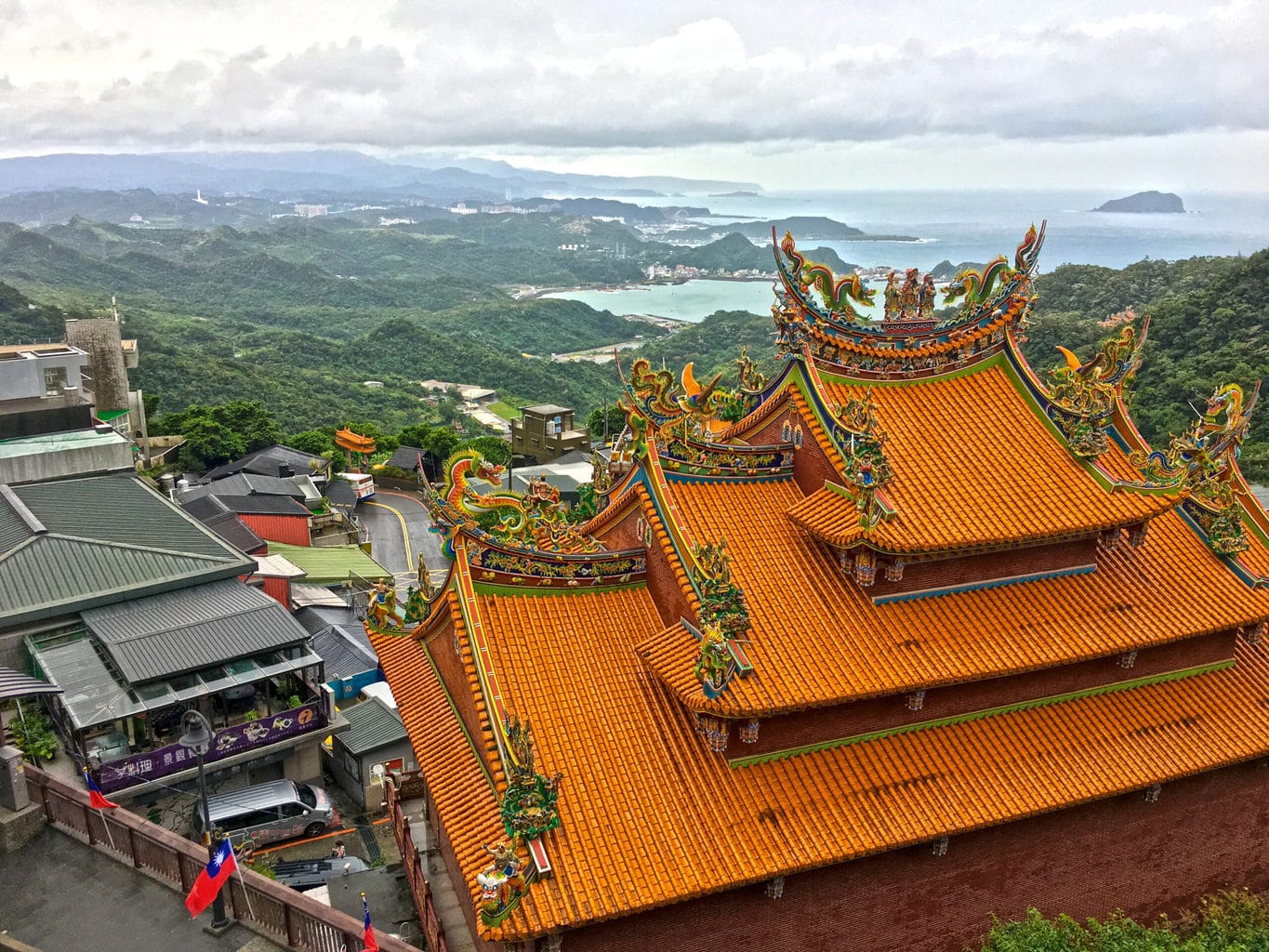
Taiwan is recognised as a sovereign state by 19 UN members (mostly in the Caribbean, Central America or in the Pacific) and by The Holy See. It however remains unrecognized by the majority since China’s return to international diplomacy in 1979.
Taiwan was a Japanese colony until 1945 when they left and the island surrendered to the Republic of China’s government in 1949, as it fled China after losing against the Communist forces.
Since 1949, Taiwan has had its own borders, army, democratically-elected government, passport and constitution. It was also a recognised country by the international community who refused to accept Communist China, until 1979 and represented the entire country at the UN General Assembly.
But this changed in 1979 when China returned to the world stage and the US Government agreed to sign a Communique in which it recognised there was only one China and Taiwan was a part of it. China replaced Taiwan at the Security Council and Taiwan was relegated to being a mere province.
For decades, both countries have remained more or less neutral on the other’s position and avoided violence. In 1992, they both agreed to sign a consensus which stated there was only “One China”. The disagreement is about who holds the control over the resulting joint entity.
Taiwan believes it has sovereignty over the whole of China while China believes the opposite. Note that Taiwan’s name is The Republic of China whereas China’s name is The People’s Republic of China.
The 1992 consensus has maintained peace and allowed Taiwan to establish commercial and semi-diplomatic relationships with many countries while tacitly implying it will not seek independence (as it considers the country as one).
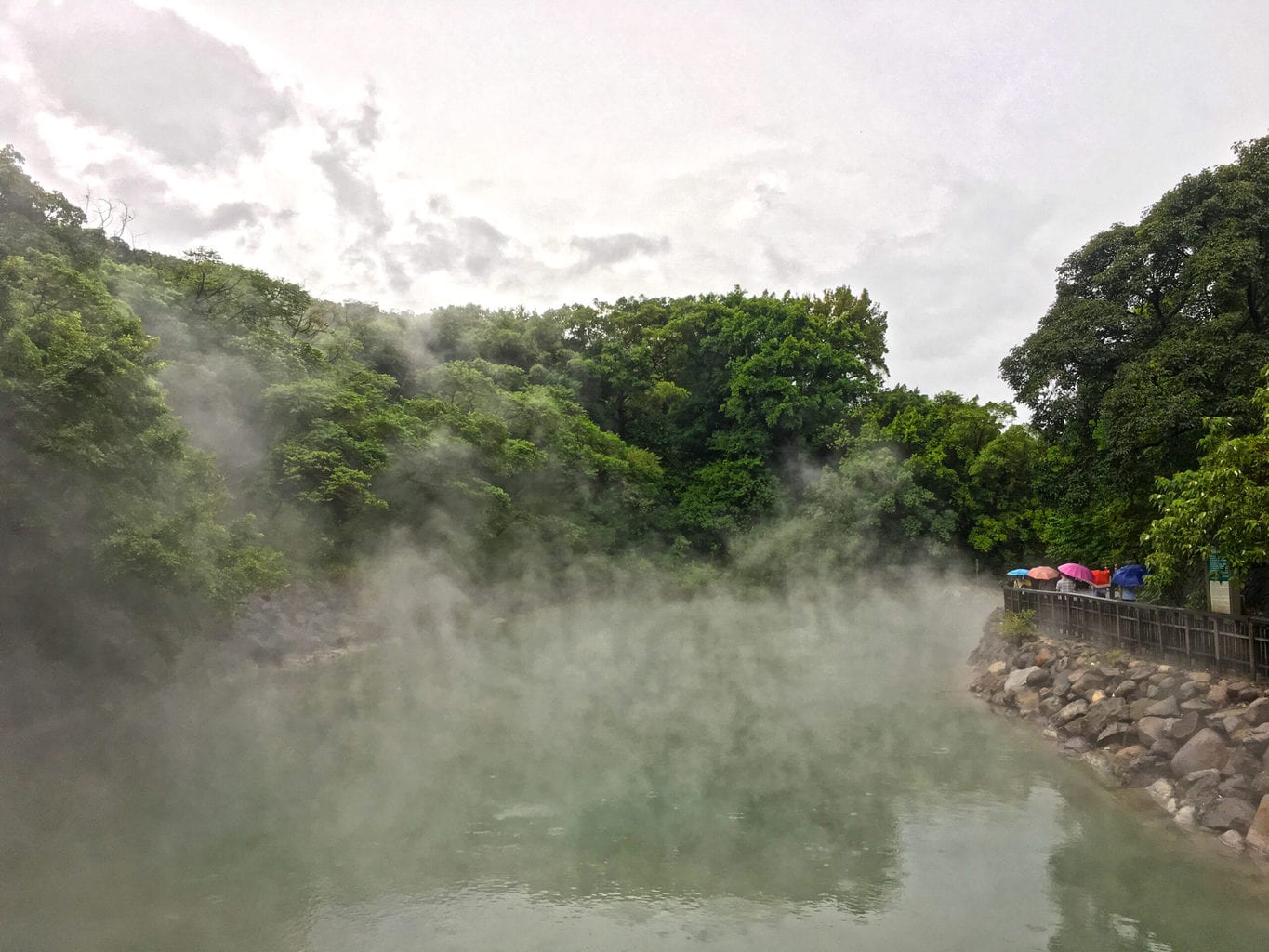
The presidents of the two countries even met at a historical event in 2015. But this changed in 2016 when Taiwan’s independentist current party came to power the year after.
Taiwan’s female president insists in Taiwan’s sovereignty over China and President Xi Jinping in enforcing the idea of One China, going as far as to pressure international organisations to remove Taiwan from their country lists.
In the last few years, China has forced major countries to cut diplomatic ties with Taipei and companies to limit their business trying to strengthen the links between the two until Taiwan no longer can live without China.
If you have visited Taiwan you will know that the country is very different from the rest of China. Just as Hong Kong and Macau are. Not least because it does not follow a communist ideology but a democratic one. This is why I include Taiwan in my number of countries.
If you are interested in reading more about the topic head over here.
The case of Kosovo
While Taiwan’s case is old and goes back to the 1940s, Kosovo’s is more recent, yet equally complex and historical in nature.
Kosovo declared its independence in 2008 and has since received recognition for its claim from the majority of the European Union, UN member states, and other relevant international organisations such as the IMF and the World Bank.
However, it can’t become a UN member because Russia has exercised its veto power as a Serbian ally ever since.
This veto also extends to other areas, such as UNESCO membership. As a result of a decision made in 2015 the country’s UNESCO-listed sites appear all under Serbia because UNESCO does not recognise Kosovo either.
Where did it all start for Kosovo?
When former Yugoslavia collapsed, most of its federal states became independent countries with the exception of Montenegro, which gained independence in 2006 and Kosovo which became part of Serbia.
The heritage of Kosovo is closer to that of Albania than to Serbia’s, the country it sought independence from. A large percentage of the population is Muslim and of Albanian ethnic origin, as opposed to orthodox.
It is this ethnic tension and Serbia’s Slobodan Milocevic army attack on the civilian population in 1998 which prompted a NATO-led intervention to push the army out of Kosovo 1999. The security situation has been precarious ever since.
NATO peacekeeping forces are still on the ground and focused around guarding key landmarks from attacks. I saw Italian soldiers from NATO at two of the Serbian orthodox monasteries in the western part of the country during my visit.
After having visited Kosovo I feel even stronger that this is an independent country so I also include it in my list of countries in the world.
South Ossetia
This region on the border between Georgia and Russia and officially part of Georgia declared its independence in 1992 after the fall of the Soviet Union. Since then, the 50,000 Ossetians who live here have received the backing of Russia, Venezuela, Nicaragua, Vanuatu, Nauru and most recently, Syria.
However, Georgia does not recognise their autonomy and fighting between South Ossetia, Russia and Georgia has gone through ups and downs in the last two decades, sometimes with Russian incursion into Georgia to force Georgian troops out of South Ossetia.
Abkhazia
Like South Ossetia, Abkhazia is officially a Georgian province on the northwestern part of the country, on the shores of the Black Sea with 250,000 inhabitants.
After a war of secession in 92/93 it declared independence in 1999, shortly after Kosovo in the hopes of riding the same wave of acceptance. But it didn’t. As a result, because the West recognised Kosovo, Russia decided to recognise Abkhazia.
Since then, a few of Russia’s allies have followed suit.
Northern Cyprus
Northern Cyprus has been under Turkish occupation since 1974 when Turkish troops invaded the top third of the island in response to a Greek-backed military coup.
A buffer zone was built between the two which in turned caused one of the most touristy and beautiful parts of the Cypriotic coast, Famagosta, to become an abandoned ghost town.
Since then, efforts to reach an agreement have been made by both parties but there has been no solution yet. Turkey wants the territory to become independent while Cyprus and the European Union want the island to unify under one nation.
If you are in Cyprus, you can walk over to Northern Cyprus easily as the capital of Nicosia is right on the border, half at either side of it, and movement of people is relatively easy.
Scratch Map: Scratch your own map of the world (UN Countries only) like me (below is my own scratch map)

Buy it on Amazon
Self-governing and non-self-governing territories: 26
So far so good.
We have countries that are fully recognised members or non-members of the United Nations and then a few which are partially recognised. Technically, the question about how many countries are there in the world is answered.
But there is more to the definition of a country than international recognition, so I also wanted to look at territories, regions or parts of the world that are not countries but we often think of them as such.
This can either be because they are former colonies which have not yet attained independence but have full government under the auspices of the UN, because they have made claims to independence that have not been recognised yet or because they are disputed territories with de facto sovereignty but without any recognition.
Should we include them when counting the number of countries?
The choice is yours and you should make an individual decision on each depending on their reality. The majority of “country counters” do not.
I suspect this is because many of them are really hard to reach (Pitcairn can only be reached by boat that departs every 2 weeks, Saint Helena on an expensive flight, the Falklands on a cruise ship), or are relatively safe parts of countries that are at war (e.g. Somaliland is safer compared to the rest of Somalia) and they prefer to count them as having visited the harder-to-visit country instead.
In my Least Visited Countries in the World article I often get comments around “Surprised not to see xxx country [read: Cook Islands, Bora Bora, Niue, etc.] on the list”, and that is usually because they are not countries. Many of them are on this list.
Let’s take a look.
Self-governing territories: 9
It is hard to make the distinction between which countries have their own government and which don’t because that implies deciding how to define the word “government” and, like country, it is not as straightforward a definition as you would think.
For example, almost all the countries (although not all) in this section may have full autonomy within their borders, have some overseas missions, or consulates from other countries within their borders, but tend to rely on the bigger mother country in matters of foreign affairs and defense.
Here is a handy table with all the self-governing nations:
| Territory | UN country it belongs to officially |
|---|---|
| Kurdistan | Iraq |
| Somaliland | Somalia |
| Puerto Rico | US |
| Cook Islands | New Zealand |
| Niue | New Zealand |
| Faroe Islands | Denmark |
| Greenland | Denmark |
| Hong Kong | China |
| Macau | China |
Kurdistan
The case of Kurdistan, unsurprisingly, is a complex one.
Firstly, we need to define what we mean by Kurdistan as it can refer to the wider area covering parts of Turkey, Syria, Iran, Armenia and Iraq where Kurds live or just the Iraqi Kurdistan region which is the most advanced on independence.
Ethnically, Kurds are split among all five countries and represent a varying percentage of the population. Their struggle dates back to the Ottoman Empire and had its rebirth with its fall. The 1920 Treaty of Sèvres recognised its nation, but the subsequent Treaty of Lausanne three years later didn’t and the Kurds became the largest stateless nation.
Today, Kurds are a large minority representing 20% of the Turkish population, where the central government has for decades tried to curtail their freedoms and impose Turkish traditions and heritage, but a small part of Armenia.
Generally speaking, when talking about tourism and about how many countries there are, Kurdistan usually refers to Iraqi Kurdistan, whose capital is Erbil.
This region in the north of Iraq has enjoyed relative stability since it was declared a safe haven in 1991 by the UK, US and France and Iraqi forces left. However, its peace has been rocked several times by terrorist attacks, fighting with Baghdad and by ISIS expansion.
Since 2014, Iraqi Kurdistan reached an agreement with the central government to trade security and defense support in the fight against ISIS in exchange for oil reserves and in the 2017 referendum, a resounding 93% of the population voted for independence, against the UN Security Council’s will.
Iraqi Kurdistan has its own flag, government, army (with female fighters) and passport but is only recognised as a country by Israel. It is an easy to visit part of Iraq with visa on arrival for many nationalities, and it is considered a relatively calm region which enjoys long periods of peace.
Somaliland
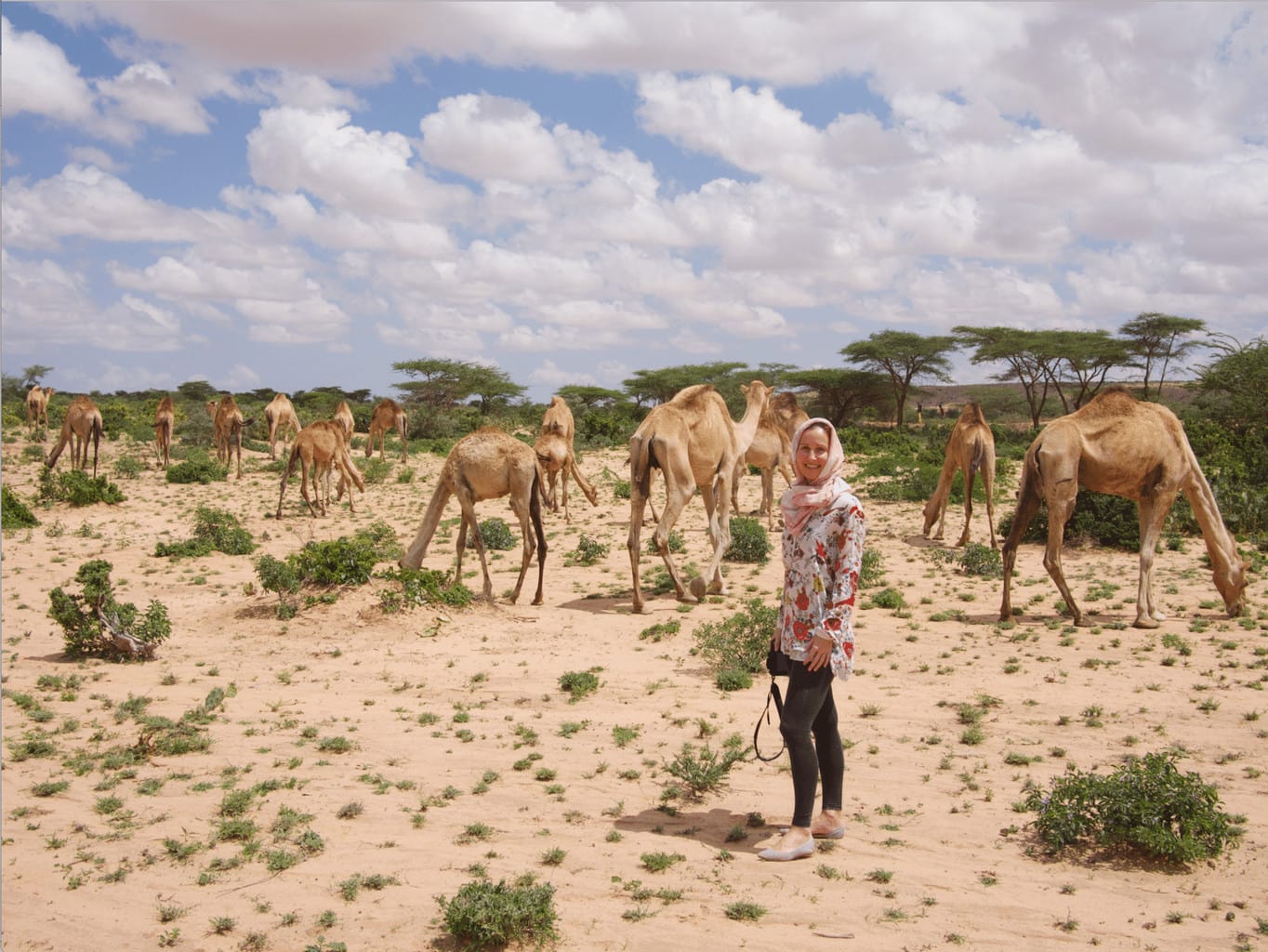
Somaliland is a relatively safer and unrecognised self-declared independent country since 1991. For a brief 5 days in 1960, the country was independent, but then decided to join the rest of Somalia.
In 1991, when the central government collapsed and the country went into chaos (from which it has not recovered yet), Somaliland leaders declared independence.
If you investigate a little or visit, you realise that, despite it has not received international recognition, this is probably because of its location as part of probably the most dangerous and unstable country in the world for which conflict resolution is pending.
Somalilanders do not have their own passport but need one from Mogadishu, but can travel to a few countries with their documents including Belgium, the UK, France, Kenya, South Africa, South Sudan and, since early 2018, the UAE.
Many country counters do not recognise Somaliland as a separate country so that they can count it as having visited Somalia, a much more daunting prospect. Also, there are quite a few interesting sites in Somaliland while Mogadishu has been destroyed over decades of violence.
The case of Puerto Rico
Puerto Rico’s status is a complicated matter similar in nature to that of Guam or American Samoa but with a different historical background.
The island was acquired by the US in 1898, when Spain lost its last colonies of Cuba and the Philippines, and its inhabitants have been US citizens since 1917.
Puerto Rico’s political status is that of an unincorporated US territory. As such, it does not have voting rights in the US elections, but it also does not pay federal taxes. It has a high degree of autonomy and hosts consulates from over 40 countries.
To add to this complexity, Puerto Ricans have voted in four referendums on matters of their political autonomy, the latest of which was in 2017 where independence won 97% of the votes but with a mere 23% turnout. Several institutions have called for the island’s sovereignty and we may see it happening soon.
The Cook Islands
The Cook Islands are the most sovereign of all the territories in the Pacific. Officially, the small group of islands where the stunning Aitutaki Lagoon is located (one of the nicest beaches in the Pacific) are “self-governing in free association with New Zealand”.
That means that New Zealand provides them with defense, passports, currency and financial aid, but the Cook Islanders decide on everything else for themselves without interference from Auckland.
The ties are strong and their political situation is unlikely to change since there are more Cook Islanders living in New Zealand (60,000) than in the Cook Islands (20,000). But the country has attempted to obtain UN membership in the last few years and is already part of several UN agencies such as UNESCO or the World Health Organization.
Niue
Niueu has the same political status as the Cook Islands but it is much much smaller and closer to Tonga’s Vava’u Archipelago (famed for their humpback whales than for its main island of Tongatapu).
With just 2,000 inhabitants, the island would struggle as an independent nation so the ties with New Zealand, where 10 times more Niueans live, are essential.
Like Cook Islands, Niue was a former British colony administered from New Zealand which then inherited it as a colony with its own independence and it then became a self-governing nation in free association with New Zealand in 1974.
Faroe Islands and Greenland
Both the Faroe Islands and Greenland officially belong to Denmark but are often considered countries by many. In fact, the Faroe Islands actually have the oldest Parliament in Europe.
Located a few hours away from Copenhagen and closer to Iceland (where I stayed in a Bubble Hotel) or the UK, both enjoy their unique culture and heritage, and have stunning landmarks. The inhabitants of both islands hold Danish passports and see the political links as economically favorable.
But their Danish status does not mean they are part of the EU or of Schengen area so if you are looking to visit the Faroe Islands you will need to get a separate visa from that to mainland Denmark. I promise it will be worth it, they have some of the most stunning landscapes.
Hong Kong
Hong Kong has its own passport, visa system, currency and culture and after decades of relative peace, it has seen its fair share of political conflict in 2019 as a result of the Chinese Government efforts to increase control over the island.
A British colony for most of the last few centuries and given back to China in 1997, Hong Kong has a strong Chinese influence within the framework of a democratic society.
The Communist ideology and principles of the mainland have not affected life in Hong Kong and this helped it become the world’s largest port at the turn of the 21st century (and keep it still at no.6 in 2016) and at the top of Asia’s financial centers (in constant battle with Singapore).
Macau
If you have been to Macau you will surely wonder why it is a part of China for it has a very unique and distinct heritage that makes it very different from the mainland and also from Hong Kong, from where you can visit on a day trip.
Like Hong Kong, Macau is a SARC, a Special Administrative Region of China. That means that it has different visa rules, different currency, different passport, and very different food some claim as the original fusion food, but still is part of China which affects full control over it.
Macau was a Portuguese colony until the end of the 20th century, despite various attempts from the Portuguese Government to give it back to China. There have been no claims to independence by the Macanese and the ties to the mainland, including its Chinese, casino-fuelled economy, are too strong for the region to ignore.
Scratch Map: Scratch your own map of the world (UN Countries only) like me (below is my own scratch map)

Buy it on Amazon
Non self-governing territories: 27
The countries on this list are considered by the UN as non-self-governing territories and the committee oversees their continued efforts to become self-governing sovereign nations.
They are former colonies with claims to independence in varying degrees of intensity and some of them have a high degree of autonomy, even their own currency and flag.
Here is the summary table:
| Territory | UN country it officially belongs to |
|---|---|
| Bermuda | UK |
| Anguila | UK |
| British Virgin Islands | UK |
| Cayman Islands | UK |
| Montserrat | UK |
| Saint Helena | UK |
| Falkland Islands | UK |
| Gibraltar | UK |
| Western Sahara | Morocco |
| Turks & Caicos | US |
| US Virgin Islands | US |
| American Samoa | US |
| Guam | US |
| French Polynesia | France |
| New Caledonia | France |
| Pitcairn Islands | UK |
| Tokelau | New Zealand |
Bermuda
Bermuda has been a British colony since the 17th century. Located a mere 2h flight from New York in the North Atlantic Ocean (not the Caribbean), it enjoys self-government in internal affairs but relies on the UK for matters of defense and foreign affairs.
The small group of islands with just over 60,000 inhabitants is known as a financial center and tax haven, or for the namesake triangle (a mystery now resolved), and does not seek independence but, given its ethnically diverse heritage, some people consider it a separate country in their own definition. Bermuda uses its own Bermuda Dolla which is pegged to the US Dollar.
Anguila
This small island very close to Saint Kitts and Nevis is ruled by a Governor appointed by the British Crown and a local Council and depends for air connections on the island of Saint Martin, split between Dutch and French overseas territories.
Tourism accounts for 20% of the revenues of the country, despite the fact that many visitors come on cruise ships and that hurricanes Irma and Maria caused widespread damage in 2017.
After the independence of its neighbour in the 1960s and the island’s push to remain part of the UK, the local governments have attempted, with varying degrees of intensity, to seek independence, which the British government has agreed to grant if a majority of the population agreed. But interest seems to have waded in recent years.
Anguilla uses the East Caribbean Dollar which is pegged to the US Dollar.
British Virgin Islands
The British Virgin Islands are another British overseas territory with a similar political status to Anguila and limited interest in independence. The islands rely on the financial services industry and on tourism, with 1 million arrivals expected in 2019 despite the sharp decline suffered in the previous two years as a result of devastating hurricanes.
The British Virgin Islands interestingly use the US Dollar as their currency.
Cayman Islands
The Cayman Islands are a group of islands relying heavily on financial services (40% of GDP) and tourism (over 2 million arrivals) and with the same political formula as established in other British overseas territories: a Crown-appointed governor with a local council.
Like Anguilla and British Virgin Islands, the Cayman islands do not seek independence and are pleased with the current arrangement. Because of their location away from the usual hurricane routes, the islands are relatively protected from natural disasters.
The Cayman Islands have their own currency, although it is pegged to the US Dollar (as is for example the UAE Dirham).
Montserrat
The tiny island of Montserrat, named after the beautiful mountain monastery Montserrat near Barcelona and the black Virgin Mary inside, was discovered by Columbus and is one of the smallest territories on this list with a mere 5,000 inhabitants.
Unlike other islands in the area, it is volcanic, and the last eruption in 1995 destroyed the former capital of Plymouth which is now considered the Pompeii of the Caribbean, and caused the population to move to a new location.
Montserrat is not actively seeking independence from the UK. Its economy relies on agriculture and hopes for tourism to grow, although it lacks an airport and the fewer than 20,000 annual tourism arrivals need to come from Antigua by ferry.
Saint Helena
Considered one of the most remote places in the world, and the home in exile of Napoleon Bonaparte until his death in 1821, the isolated island of St. Helena, previously only accessible by a monthly 5-day boat service, is since 2018 connected to Johannesburg by a new, and useless, airport.
This former British colony in the South Atlantic Ocean is as remote as it gets. Montaneous, volcanic, and wet, it also includes the islands of Ascension and Tristan da Cunha which are even more isolated from the rest of the world and located hundreds of kilometers from St. Helena.
First discovered by a Spanish explorer for the Portuguese Crown, then annexed by the Dutch and finally taken over by the British, it has been a British overseas territory since 2002.
Saint Helena is unlikely to seek independence from the UK and become an independent country due to its small size and precarious economy, primarily funded by the UK.
Falkland Islands (Islas Malvinas)
This disputed territory claimed by both the UK and Argentina is located in the South Atlantic Ocean and has a double personality being referred to as Falklands or Malvinas depending on who you ask.
The islands, together with South Georgia and The Sandwich islands, are considered a British overseas territory with a joint British-appointed governor and a local council. Their status is in disagreement with Argentina who claims sovereignty over the islands and argues that the UK has illegally invaded them. If you visit Buenos Aires you will see a monument to the Malvinas in the main square.
Because of their remote location, 90% of the visitors to the islands come by cruise ship to see the penguin colonies and stunning landscapes. Fisheries is another major contributor to the GDP.
Like other smaller islands and overseas British territories, the Falkland Islands have stated their self-sufficiency, self-government and their interest to remain a British overseas territory.
Gibraltar
Gibraltar, better known as the name of the Strait it presides over, the rock that makes up a chunk of it or the monkeys which inhabit it (yes, I am Spanish), is a 5 sqm UK territory in the south of Spain, about 30km from the African coast.
Gibraltar has its own government, flag and currency, pegged to the UK pound, and is linked to Spain by an isthmus. Disputes between Spain and the UK are long standing since Spain granted control of this strategic point to the UK at the end of the 18th century.
If you count it as a country and decide to visit, you will be able to learn about its strategic value, its military history or visit the cave complex that is UNESCO listed (under the UK).
The Western Sahara
The status of the Western Sahara is the longest unresolved dispute in Africa involving the Moroccan Government and the Sahrawi Polisario Front.
Historically controlled by Spain which withdrew its presence in 1975 (with the fall of Franco’s regime), the claim over the Western Sahara sovereignty was made by Morocco and Mauritania, but later withdrew its claim in 1984.
The Front Polisario has been fighting for independence since then but both sides stood down in 1991 when a UN-led ceasefire was agreed in exchange for a referendum on independence that never happened.
The half a million local Sahrawi population occupy a land that is huge and mostly covered by the Sahara Desert. It is separated from Morocco by a 1,200km long sand wall and UN peacekeeping operations have been on the ground to maintain peace since the 1991 truce.
Morocco proposes control over the territory in exchange for autonomy, in a similar way as the UK manages its overseas territories, but that is not enough for the Front Polisario who want full autonomy.
The Western Sahara is recognised by a few dozen countries, mostly in Africa and Latin America, and is a member of the African Union, but has no official support from any European country and the US endorses Morocco’s plans questioning the Polisario’s ability to maintain peace and control over the territory.
UN-backed Peace talks resumed in 2018 with the help of the US, whose national security advisor helped broker the 1991 truce, but have yet to resolve the situation.
The support of many countries for Morocco’s plans is not so much to do with their legitimate claim but with the practicalities of ensuring stability in the region with the Polisario seems less prepared to guarantee.
Turks & Caicos
After a spat over local corruption and the imposition of direct rule from the UK over the islands, The Turks & Caicos recovered their local government under British control in 2012.
They used to be part of Jamaica but when it achieved independence in 1962 they became a British colony under the ruling of the Governor of the Bahamas. When this became independent, they got their own governor.
As an overseas territory of great tourism and offshore financial value, the Turks & Caicos are not doing too badly but prefer to remain part of the UK as an overseas territory.
United States Virgin Islands
The only non-self-governing territory in this list to belong to the US, the US Virgin Islands, were acquired by the US government from Denmark in 1917 to be used as strategic naval bases and were originally ruled by Naval government.
Today, its inhabitants are US citizens, and the islands are an unincorporated US territory like Guam or Puerto Rico, with its own government but without voting rights in the US elections. You can use this guide to find plenty of beautiful places for your accommodations at St John, one of the three main islands.
American Samoa
American Samoa has the same political status as The US Virgin Islands or Guam and it became a part of the US because of the country’s strategic naval interest in the area. As an unincorporated US territory since 1951, American Samoans have a US passport but not the right to vote.
They receive aid and financial support from the mainland, most notably since the 2009 tsunami, and fill the ranks of the US military with the highest enrollment rates, but don’t enjoy full citizenship.
Reachable only from Samoa, in turn a pretty remote country, or from Hawaii, this volcanic island in the Pacific is unlike all the other Pacific islands and countries, closer to some parts of Hawaii than to the fine sand beaches of the South Pacific.
It is hard to think that you are in the US when you visit American Samoa. While Guam and Puerto Rico are developed and relatively large islands, American Samoa has 50,000 inhabitants, little in the way of industry except for a large tuna canning factory in the center of the island.
Their Polynesian culture, the oldest in the Pacific, is closer to their neighbour, Samoa, which is a mere 30min flight away but a day ahead, than to North America. And despite the huge pick-up trucks and the very high obesity rate, there is little else in common with their motherland.
I wanted to rent a car during my visit, but they were all sold out, as in, all the cars on the island, so I spent a couple of days using the tourism office staff’s personal car. They had not seen a tourist in several days. Less than 20,000 visitors arrived in American Samoa in 2017.
Guam
Guam is another unincorporated US territory located 2,000km off the Japan coast, and used as a major US naval base in the Pacific thanks to its deep sea port. About 8% of the population of Guam are naval personnel and their families.
Historically a Spanish colony, Guam is a pretty unique place. Despite Spanish influence and most recently US control, a lot of the original Chamorro heritage has been maintained and the local population are very proud of it.
Additionally, 30% of the population of Guam are Filipino, as there are direct flights from Manila and many Filipino Overseas Foreign Workers work in the developed tourism industry.
Unlike American Samoa, Guam is a thriving tourism destination welcoming 1.5 million tourists from South Korea and Japan primarily (over 80%). They come for the duty free shopping and the beach and benefit from the island’s visa program which allows visa-free entry to 40+ nationalities (including China), bypassing the strict US visa rules.
French Polynesia
French Polynesia, as the name may already indicate, is a French overseas territory, that means it is part of France and as a result, of the European Union, but has great autonomy acquired through the years.
It became a protectorate in 1842 and a colony in 1880 until becoming a French overseas territory at the end of WWII. In 1984, after decades seeking independence from France, it became an autonomous territory and in 2003 a collectivity.
In 2013, the UN put French Polynesia on its list of non-self-governing territories working toward self-determination.
French Polynesia, not to be confused with Tahiti, which is its main island, is made of several islands in the South Pacific, about 2h flight from the Cook Islands and five from Auckland or Hawaii, and it occupies a territory the size of the European Union, albeit mostly filled with water.
The islands are a popular honeymoon destination owing to their famed overwater luxury villas (I loved the Intercontinental Resort) and the fact that they evoke dreamy images since Gauguin first painted them.
Their culture and heritage is heavily influenced by the Pacific civilizations yet it has preserved a uniquely French way of life which can be seen in its gastronomy and language. French Polynesia has its own currency, the French Pacific Franc, also used in Caledonia, and its own government, but its Head of State is the French President.
New Caledonia
Like French Polynesia, New Caledonia is a French overseas territory using the same French Pacific Franc as currency. But unlike French Polynesia, New Caledonia has been pretty active in achieving independence and conducted a referendum on self-determination in 2018 which rejected independence.
British Captain Cook discovered New Caledonia at the end of the 18th century and France annexed it in 1882. The US set up a naval base on the island during WWII and at the end of it, France named it an overseas territory.
Since then, the local pro-independence parties have been active, even taking violent action in the 80s in a civil war that ended with the commitment from the government in France to set the basis for self-determination. The first such step was a referendum in 2018 with two more to be presented in 2020 and 2022.
New Caledonians are 40% of Melanesian descend and 30% European, mostly French. The rest is a mix of peoples from surrounding islands and countries such as Futuma or Vietnam.
When looking at the Pacific, with the exception of Australia and New Zealand, the island is the largest, slightly bigger than Fiji, and most developed with a GDP per capita at purchase parity, above that of Greece or Portugal.
Pitcairn Islands
This has to be the smallest, most remote and thinly populated part of the world together maybe with Tristan da Cunha.
Pitcairn was the first British colony in the Pacific discovered at the end of the 18th century by the Mutineers of the MH Bounty. It still remains Britain’s last colony in the Pacific.
The 50 inhabitants of the island practically live off subsistence farming, bartering and sale of handicrafts and postage stamps to visitors. But will welcome anyone who wants to move there.
To get there, one needs to do so by onboard the charter boat service that covered the journey every two weeks. There are also cruise ships and other private sailing boats that occasionally stop.
Because it has no port, people and goods need to be brought into the island by longboats from ships stationed at sea.
Tokelau
Tokelau is another small Pacific island which was originally a British protectorate and is now a self-administered New Zealand territory.
After referendums held in 2006 and 2007, the territory decided to remain as such instead of progress into a territory in free association with New Zealand like The Cook Islands.
The 1,200 people who live on the three islands that make Tokelau are rural, share subsistence agriculture and make some revenue from selling copra, handicrafts and postage stamps. New Zealand finances 80% of the funds needed to maintain minimum services.
To visit Tokelau, you need to get on a ship that departs from Apia in Samoa, every two weeks, and like with Pitcairn, then jump on a smaller boat to get ashore as there is no port on the island.
Scratch Map: Scratch your own map of the world (UN Countries only) like me (below is my own scratch map)

Buy it on Amazon
Other nations: 1
Given the veto power five of the nations have in the UN Security Council, and that the Council has effective power to decide what is discussed at the Assembly and acts as a filter, I would like to pause for a moment and look at other territories that we may have overlooked when deciding on the number of countries in the world.
This could be because bully Russia, China or the US have never allowed for the discussion to take place exercising their veto, or because these territories have never made claims to independence.
Tibet
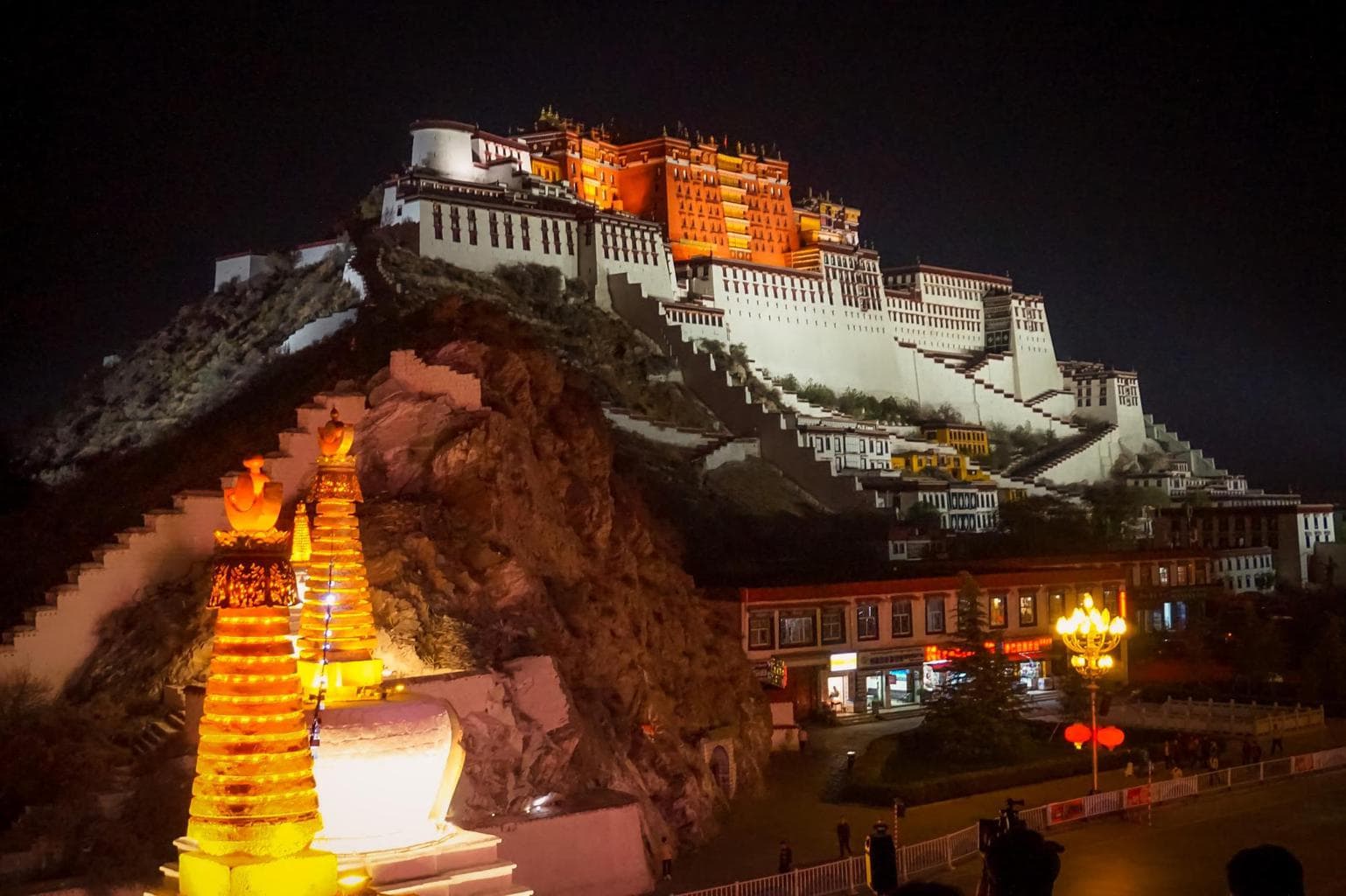
The most obvious case here is Tibet. An oppressed part of the world that is progressively being assimilated by Han Chinese but which has made loud and global claims to its autonomy and independence.
If you visit Tibet, you have first hand experience and knowledge about the inroads the Chinese Government has made to suppress their culture and control their movement and freedom to express. You also realise how different it is to the rest of China.
On my Tibetan journey from Lhasa to Everest Base Camp, despite the confusing high altitude, I noticed the obligatory Chinese flags on roofs, heard about banning of the Dalai Lama’s pictures, banning of local traditions, all overt and unchallenged ways to slowly tear at the territory’s identity.
Nonetheless, many inside and outside the nation have managed to maintain international interest and, while independence seems an unlikely solution given Beijing’s stronghold and the disinterest and inability of any other country to intervene in internal Chinese affairs, I like to count Tibet as a separate entity from China.
Other country lists
Political recognition tends to be the most commonly accepted way to determine if a region is a country or not. So when asking how many countries there are in the world, most people end there.
But there are many other aspects one can look at to have a list of the number of countries, from sports to recognition from non-political organizations.
Travelers Century Club: 327
Hard core country counters and frequent travelers or those who have spent all their life on the road will be familiar with the Travelers Century Club, a membership-only club founded in 1954 and made of people who have been to at least 100 of the 327 countries and territories that the TCC considers.
I love the concept and the club has been running for a long time but if you are not US-based you might see little value in joining because while the community is larger there, and there are regular meet-ups, the presence outside of the US is minimal.
Before the advent of the internet, and before information of hard-to-reach places was easy to find, the TCC was an invaluable source of information. Sadly, it has not kept up with times. I was a member for a couple of years but the $100 annual fee brought me no value so I did not renew. You can see their list here.
Number of countries participating in the Olympic Games: 206
If we are looking at sporting prowess, the Olympic Games are a fine place to get the number of countries in the world.
So how many countries does the International Olympic Committee recognise? 206, each with their own National Olympic Committee and a set of sportsmen and women ready to take on the sports world.
You can see the countries competing in the games in the opening ceremony when they all parade in the stadium, but let me save you the time.
The number of countries as per the Olympic Committee is made by taking the 193 UN members and adding a few semi-independent regions or partially recognised countries:
- 1 Non-member state Palestine (I can’t imagine the religious men and women of The Vatican competing in shorts)
- Kosovo which joined in 2015
- Taiwan, which has been a long standing member but competes under the name of Chinese Taipei
- Puerto Rico
- Aruba
- Bermuda
- British Virgin Island
- Virgin Islands
- Cayman Islands
- Hong Kong
- American Samoa
- Cook Islands
- Guam
Note that some of the self-proclaimed countries in the previous section, such as Somaliland, are not counted here as they are not recognised by the International Olympic Committee. Also, the distinction between which dependent regions participate and which don’t is not entirely clear, even within the same country.
While Cook Islands (part of New Zealand) are allowed, Tokelau is not. While the British Virgin Islands is, Turks & Caicos, which is also British is not, while China has allowed Hong Kong to participate, Macau does not.
The CIA World Factbook: 267
When I was a consultant, the CIA World Factbook (yes the US Central Intelligence Agency) was our go-to source with the most reliable and updated financial, economic, social and political data on countries across the world. They compile data from various sources and keep it always up to date.
According to this database, there are 267 “entities” that are being tracked. This includes all of the UN Countries, all the non-members, some of the disputed territories, some of the non-self-governing territories and some more, usually islands or clearly demarcated territories with any sort of geographical identity.
Places like the Christmas or Cocos Islands, the Arctic regions or the Gaza Strip all have their entry in the database, as do esoteric places like the British army base of Akrotiri, in southern Cyprus. Yet South Ossetia, Somaliland, North Cyprus and Abkhazia do not.
Why? Because the territories included are those the US recognises.
Scratch Map: Scratch your own map of the world (UN Countries only) like me (below is my own scratch map)

Buy it on Amazon
Pin this to any of your world facts or travel boards and create your own bucketlist!
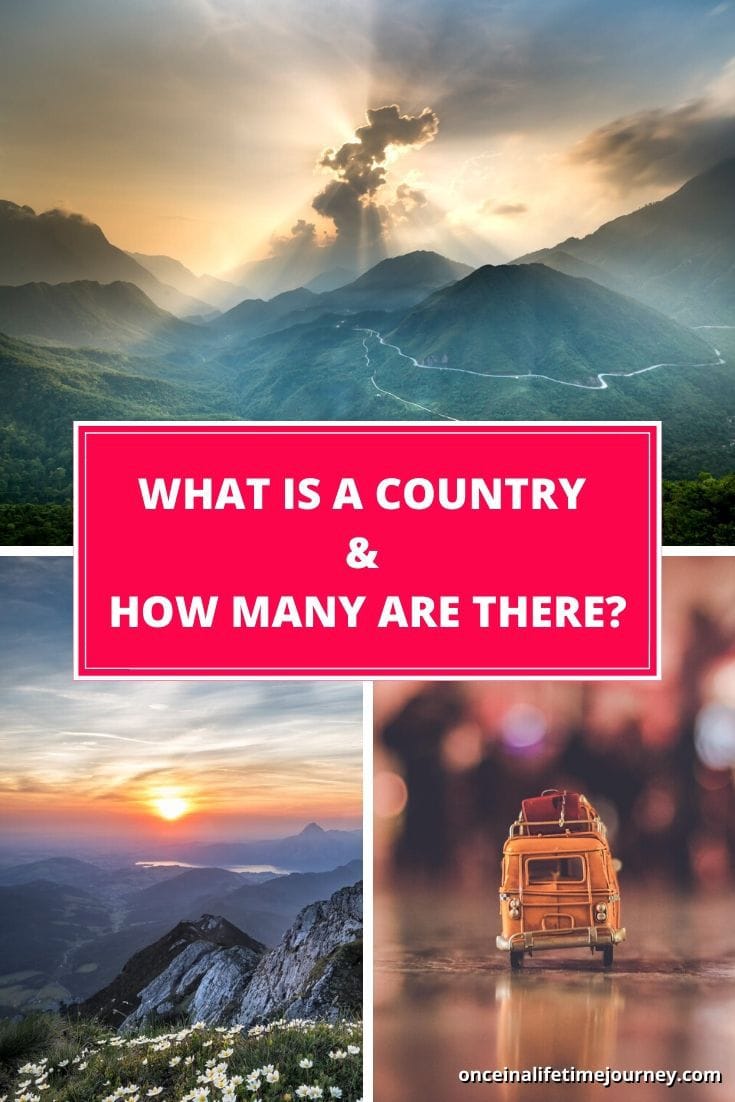
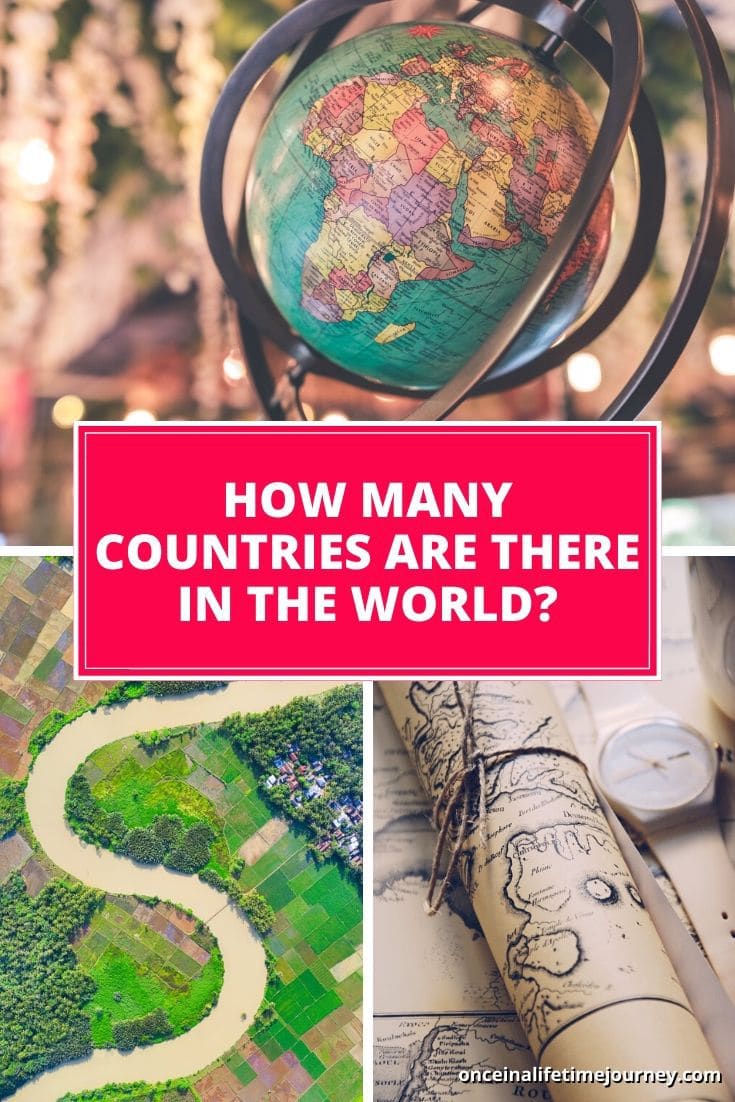
- Check if you need a visa, get help processing it at iVisa.
- Never ever leave without travel insurance. Get affordable coverage from World Nomads or long term insurance from Safety Wing.
- I find all of my flights on KAYAK. Check their Deals section too.
- Search for all your transportation between destinations on the trusted travel booking platform Bookaway.
- I book all my day trips and tours via GetYourGuide, they are the best and their tours are refundable up to 24h in advance.
- Get USD35 off your first booking with Airbnb.
- Compare hotels EVERYWHERE at HotelsCombined and book with Booking.com.
- Compare car rental prices at Rentalcars.com

